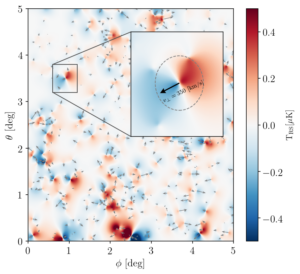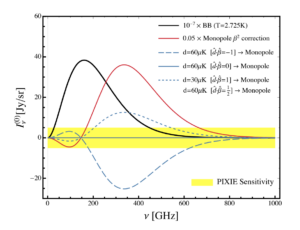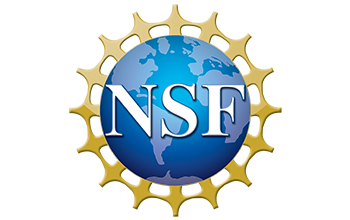Prof. Pierpaoli works on different topics in Astrophysics and Cosmology, which vary and evolve with time. The general area of research is theoretical cosmology and model comparison to data. Prof. Pierpaoli has worked on dark matter characterization, neutrino cosmology, structure formation and evolution, characterization of galaxy clusters’ physics, gravitational waves from inflation, reionization, and peculiar velocities (our own and others’).
The group is currently participating in the activities of the Simons Observatory and the CMB-S4 experiments.
A brief description of some the group’s recent research achievements and current projects follows.
Determination of large scale velocity fields

Peculiar velocities (beyond the cosmic flow) directly probes gravity, therfore they allow to shed light on the nature of the energy density in our Universe, as well as the properties of gravity on intermdediate to large scales. Some astronomical observations currently allow to determine the radial velocities of galaxies and clusters, but the transverse component of the motion is typically yet not determined. The transverse motion of massive halos (e.g. galaxy clusters) induces a dipolar fluctuation in the temperature of the Cosmic Microwave Background. This effect, known as the Birkinshaw-Gull (aka moving lens) effect, in principle allows to determine the transverse component of the velocity, addinng information not yet exploited. We showed that this signal, which is yet unobserved, will be statistically detected with future CMB surveys. We are perfectioning the techniques to open this new window on the determination of the velocity fields. This measurement will help us better understand the large scale structure of the Universe and its growth history.
Determination of our own peculiar velocity

The motion of the Solar System with respect to the Cosmic Microwave Background induces a dipole that is indistinguishable from any intrinsic dipole component that the CMB might possess. This leads to a degeneracy between the kinetic (motion-induced) dipole and intrinsic dipole moments of the CMB. Nevertheless, we demonstrated that the kinematic dipole induces spectral distortions in the CMB monopole which allows us to separate it from any intrinsic dipole component. This measurement is not yet achievable with current experiments, but planned experiments dedicated to a precise measurements of large-scale anisotropies on a wide range of frequencies will be make it possible to disentangle these effects.
Clusters’ detection and clusters’ cosmology
Clusters
We constructed an optical galaxy cluster catalog from the Sloan Digital Sky (SDSS) survey.
Modified gravity and pairwise velocities
Pairwise velocities (the tendencies of galaxies to fall on each other) provide a way to test how gravity acts at large scale. We are working on characterizing the ability of future surveys to exploit this properties.
Clusters in the local Universe: the LoVoCCS survey
Our research is funded by NASA, NSF, and the Simons Foundation.

